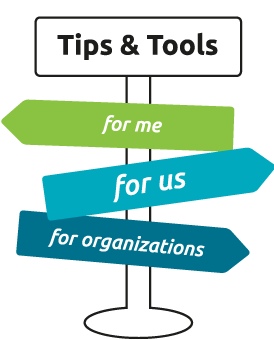Tips & Tools

10/17: 'Embedded' with the Placemakers
In many places walkers get more space. 'Get'? Regularly, they have made improvements themselves, they tell me
As the only writer, I was embedded in the Placemaking Week. Two days long, from 11 till 14 October. They celebrated their Placemaking Week with four hundred of them, from 46 different countries. With excursions, in the Netherlands. And a lot of storytelling, workshops and peptalks in Amsterdam's Pakhuis De Zwijger.
Placemakers want more optimal use of public space. They give places that no longer have a function, a new life. Streets and squares that can be used better, according to residents, are transferred. More green, more space for pedestrians and playgrounds for children. Less dominance for cars. Placemaking is in the hands of motivated local officials, civil society organizations and citizens as initiators. Professionals like designers and traffic experts help. Many volunteers spend time and, sometimes, money to improve their surroundings.
More active residents
Central in the event were success stories from all over the world, where clear results were achieved. In the safe atmosphere there was also room for failed projects. Message: "With our approach ‘Lighter, Quicker, Cheaper’, we can help making better public space". And: "Food happenings are a key to stimulate residents to be more active in their environment".
Lucinda Hartley showed how in Melbourne Australia, the quality of life was improved in fifteen locations. She is Director of CoDesign Studio. “Start with a new temporary layout of a street. With playgrounds and, for example, a small Urban Food Market", she says. “Use mobile setups, made to be removed quickly.” Slowly, asphalt turns into green space, and pedestrians and others benefit. In her Neighborhood Project, hundreds of citizens work together. Hartley: "Such an approach requires a lot of time and persuasion. One has to get licenses or temporary permits. Sit in meetings with traffic experts that have to be persuaded to ease protocols and standards as an exception. "
Repeatable recipes
The United States also show many examples. For example, Nate Hommel from Philadelphia tells about his project 'Pedestrian Plazas'. The first pilot, launched in 2010, was a temporary provision. On the road activities were organized, some of the parking areas were blocked for one day a week. More room was made for most stakeholders. After a period of adjusting, try out, the approach became a hit. Permanent reinstatement was the result. The plazas became a hit, a common feature in the city. There is spent an average of $ 60,000 per location. A total of $ 10 million.
A similar example is the model of Katharine Czarnecki of the Michigan Economic Development Corporation. Applied in 70 neighborhoods, with $ 36 million as basic investment for all changes. Partly by crowdfunding (5 million) and donations from private foundations (4 million). This seed money multiplied into a $ 27 million other private investments. The states of Indiana and Massachusetts have copied the approach.
Global applications
Placemaking has been launched by PPS: the Project for Public Spaces, based in New York. Over the years, the team, led by Fred Kent, has supported and inspired initiatives all over the world. The organization of the week in Amsterdam was in the hands of PPS and the Dutch consulting firm STIPO (www.placemakingweek.org). Special to me were the many examples of repeatability and spreading of the method. Often initiatives, first the size of one postage stamp, were replicated elsewhere.
Further wings
Cecilia Andersson, Director of UN Habitat, called on participants to teach their local authorities. Gil Penalosa, from an organization that promotes design on human scale ('8-80 Cities'), warned against hypes to make street design as simple as possible, like shared space. Being safe as a pedestrian there, is often difficult: "My old mom is not able to negotiate in the street with a truck driver who's on speed. Yes, according to the theory, he has to take into account more vulnerable road users, but practice is different. " Penalosa ended with a passionate plea to give Placemaking further wings.
( 31 October 2017 )
Overview Blogs
- News autumn 2024
- my Ebook for free now
- 3/20 'Being outside crucial in corona times'
- 2/20: Parkrun: getting overweight people walking
- 2/20: Ban on e-peds in some countries, good for walkers
- 1/20: Walker picking up street garbage, wins Green Top 100
- 9/19 Sensor city and our feet
- 8/19: The Dutch Healthy City
- 7/19: Putting Pedestrians First
- 3/19: Doctors walking their patients
- 1/19: People do buy my book
- 11/18: My book is born 2
- 9/18: My book is born
- 7/18: Temporary ban electrical steps
- 6/18: Amsterdam children healthier thanks to local policy
- 5/18: New tip, new tool
- 4/18: Walk-to-Work Day
- 3/18: Happy Mobility
- 2/18: Dutch elections: more benches in the streets
- 1/18: On foot in the new year
- 10/17: 'Embedded' with the Placemakers
- 9/17: Positive reactions on my website
- 7/17: Cyclists` advocacy for walkers
- 5/17: Walk to Work Day successful
